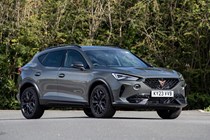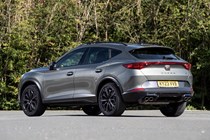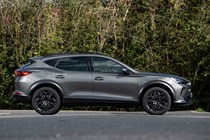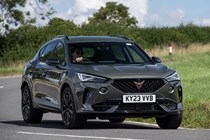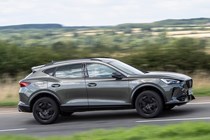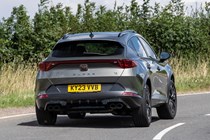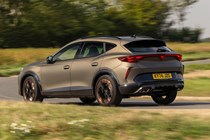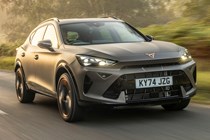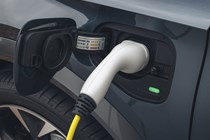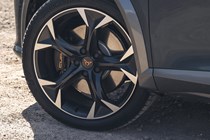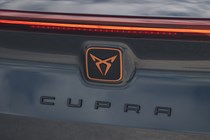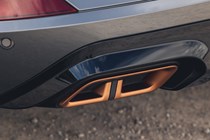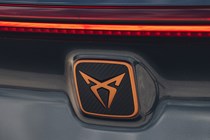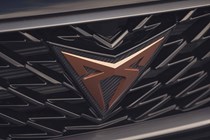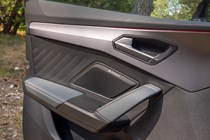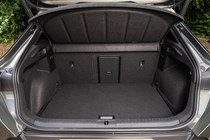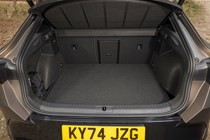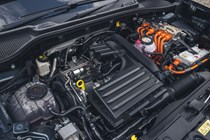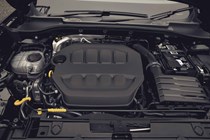
Cupra Formentor running costs and reliability
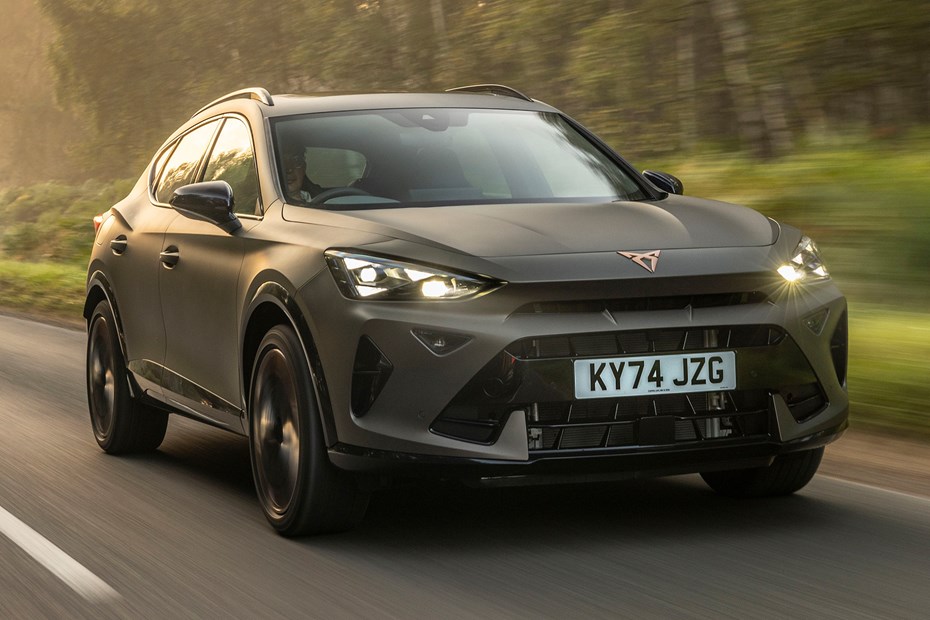
Miles per pound (mpp) ⓘ
| Petrol engines | 4.5 - 7.0 mpp |
|---|---|
| Plug-in hybrid petrol engines * | 6.5 - 7.7 mpp |
Fuel economy ⓘ
| Petrol engines | 31 - 47.9 mpg |
|---|---|
| Plug-in hybrid petrol engines * | 44.1 - 52.3 mpg |
- Plug-in hybrid offers best fuel economy
- 333hp petrol is thirsty but entertaining
- No diesel options for UK buyers
What are the running costs?
UK Cupra Formentor buyers can choose from four petrol engines and two plug-in hybrid powertrains. The cheapest non-electrically assisted engine is a 150hp 1.5-litre four-cylinder unit, which Cupra says will return between 43.5 and 44.8 mpg according to combined WLTP figures, with CO2 emissions as low as 140g/km.
If you opt for the manual, your Benefit-in-Kind tax rating will sit at 33%. However, this figure drops by two percentage points if you splash out on the optional seven-speed automatic, as it’s hooked up to the mild-hybrid engine with lower CO2 emissions at 133g/km of CO2.
We don’t yet have any efficiency figures or CO2 stats for the 204hp plug-in hybrid Formentor, but we’ll report back here as soon as we get our hands on them.
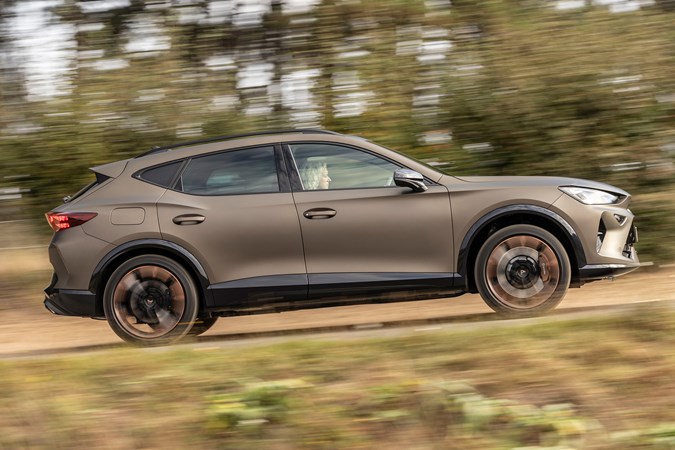
If you’re a real glutton for financial punishment, opt for the 333hp petrol. Cupra says it can return between 30.7 and 32.5mpg, but those figures are only ever possible if you tickle the throttle – and you’re unlikely to do that because it’s great fun to drive hard.
Cupra’s 1.5-litre plug-in hybrid powertrains promise to be the cheapest to run. The brand says its more powerful 272hp model can return between 470.8-706.2 mpg on the WLTP cycle, though these sky-high figures are only obtainable if you exclusively drive in electric mode.
Let the battery pack go flat and your fuel economy will take a dive, as the engine needs to work harder to haul around the dead weight of the electric motor and battery pack.
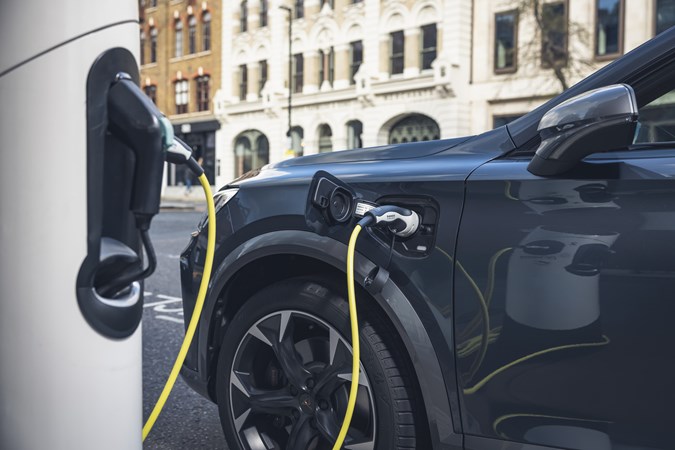
The Formentor’s electric range figures also depend entirely on the weather. We tested the previous model’s more powerful PHEV during the winter and only managed to extract 21 miles of range from the battery before running it flat – although you should get more than that in the summer months. With the help of the battery, the Formentor returned 52.2mpg over our rural test route.
The biggest bonus of the hybrid models is their devastatingly low CO2 emissions. They start from just 10g/km for the 272hp version, and so the more power of the electrified Formentors falls into the 5% Benefit-in-Kind tax category. Again, we’re waiting on the figures for the 204hp version.
Also, remember that 94% of UK journeys are less than 25 miles, so if you can charge up at home every night, you’ll rarely need to fill up the Formentor e-Hybrid with petrol. If you motor around on petrol more than electric power, you’ll likely end up making more trips to the pump, as both PHEVs have smaller 40-litre fuel tanks.
Servicing and warranty
Cupra sells the Formentor with a five-year/90,000-mile warranty as standard, although you can choose to extend this by one, two or three years for an additional fee. That’s not bad, but it can’t match the seven-year warranty offered with the Kia Sportage or the 10-year warranty provided with the Toyota RAV4 and Lexus NX.
Cupra offers a service plan for the Formentor called Cupra Care. The scheme is split into two packages: one for cars aged from 91 to 365 days, and then another for cars over one year old. The former includes the first two services, an oil service, an oil inspection and one pollen filter – all for £474, or £19.75 for 24 months. For cars over one year old, the plan covers the next two services, plus the extras included in the first plan, though for an increased plan of £528. Cupra also throws in complimentary delivery and collection, a courtesy clean and videos of the service work as part of the package.
Reliability
- Should echo SEAT’s good reputation
- Based on proven mechanicals
- Two recalls since launch
SEAT has a good reputation in the reliability stakes, largely because its cars are built using tried-and-tested mechanicals from the Volkswagen Group. Cupra is no different. The Formentor looks wild and innovative on the surface, but it’s based on the same underpinnings as the latest Volkswagen Golf and SEAT Leon – neither of which have a reputation for breaking down.
Cupra has issued a couple of recalls, though. The first was in 2020 and related to the sensors for the front assist safety system not being configured correctly. It only affected 55 vehicles, but it’s worth checking with your dealer that the remedial work has been done if you’re buying used. The second recall was issued in 2021 in relation to the front seat belt anchor points. That affected 346 cars.
Ongoing running costs
| Road tax | £195 - £620 |
|---|---|
| Insurance group | 19 - 35 |
Get an insurance quote with

|
|










